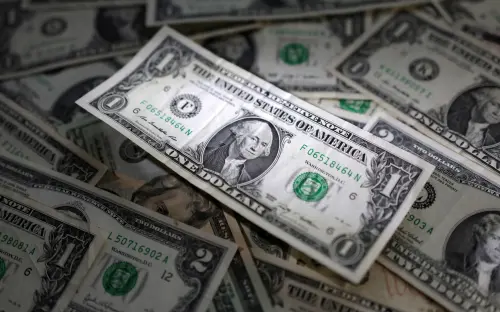Dollar bullish sentiment has diminished following a significant drop in the greenback due to concerns about U.S. economic growth. However, there are investors who believe that tariffs could still bolster the U.S. currency.
Since U.S. President Donald Trump's inauguration in January, the dollar has declined by about 5%, reaching a four-month low. The uncertainty surrounding U.S. trade tariffs has intensified apprehensions regarding American economic expansion. This factor, combined with an improved economic outlook in Europe, has led investors to redirect their investments to economies with perceived higher growth potential, putting additional pressure on the dollar.
Furthermore, in currency futures markets, investors have significantly reduced their net long positions on the dollar, which dropped from a nine-year high of $35.2 billion in late January to $15.3 billion.
Concerns among investors selling the dollar stem from the potential negative impact of tariffs on the U.S. economy, such as increased costs for businesses and consumers, disruptions to supply chains, and decreased trade volume. Despite this, not all investors view this as the right time to sell off the dollar.
Some experts suggest that the dollar could still see gains with the full implementation of tariffs, as they might reduce demand for foreign currencies by raising the cost of importing foreign goods, potentially strengthening the dollar. Factors that powered the dollar's rise in the previous year remain in place, contributing to its status as a safe haven asset in times of global turmoil.
According to Paresh Upadhyaya, director of fixed-income and currency strategy at Amundi US, the dollar's high yield and the strong U.S. growth compared to other major economies are key supporting factors for the greenback.
Despite recent fluctuations, analysts caution against underestimating the potential for the dollar to benefit from a prolonged period of multi-country tariffs. Francesco Pesole, a forex strategist at ING in London, anticipates that the euro could weaken against the dollar by the end of the year.
The ongoing implementation of tariffs by the Trump administration has caused concerns about an economic slowdown and inflationary pressure. Investors speculate that a trade war scenario could prompt a rebound in the dollar.
Ugo Lancioni, senior portfolio manager at Neuberger Berman, holds a slightly bearish outlook on the dollar, believing that much of its potential upside has already been factored into its pricing. However, he acknowledges that the dollar could recover some losses in the event of an escalated trade conflict.
The unpredictability resulting from tariff threats makes betting against the dollar a risky proposition, as highlighted by UBS strategist Vassili Serebriakov.
While the euro has recently surged to a four-month high due to optimistic expectations of European growth, some investors remain cautious about its ability to sustain this momentum.
Steven Englander, head of G10 FX strategy at Standard Chartered in New York, warns against overreacting to European fiscal developments, as seen in previous market fluctuations following significant policy announcements.
The euro is projected to decline to $1.03 in three months and trade at $1.04 in six months, based on a survey conducted between March 3-5.
